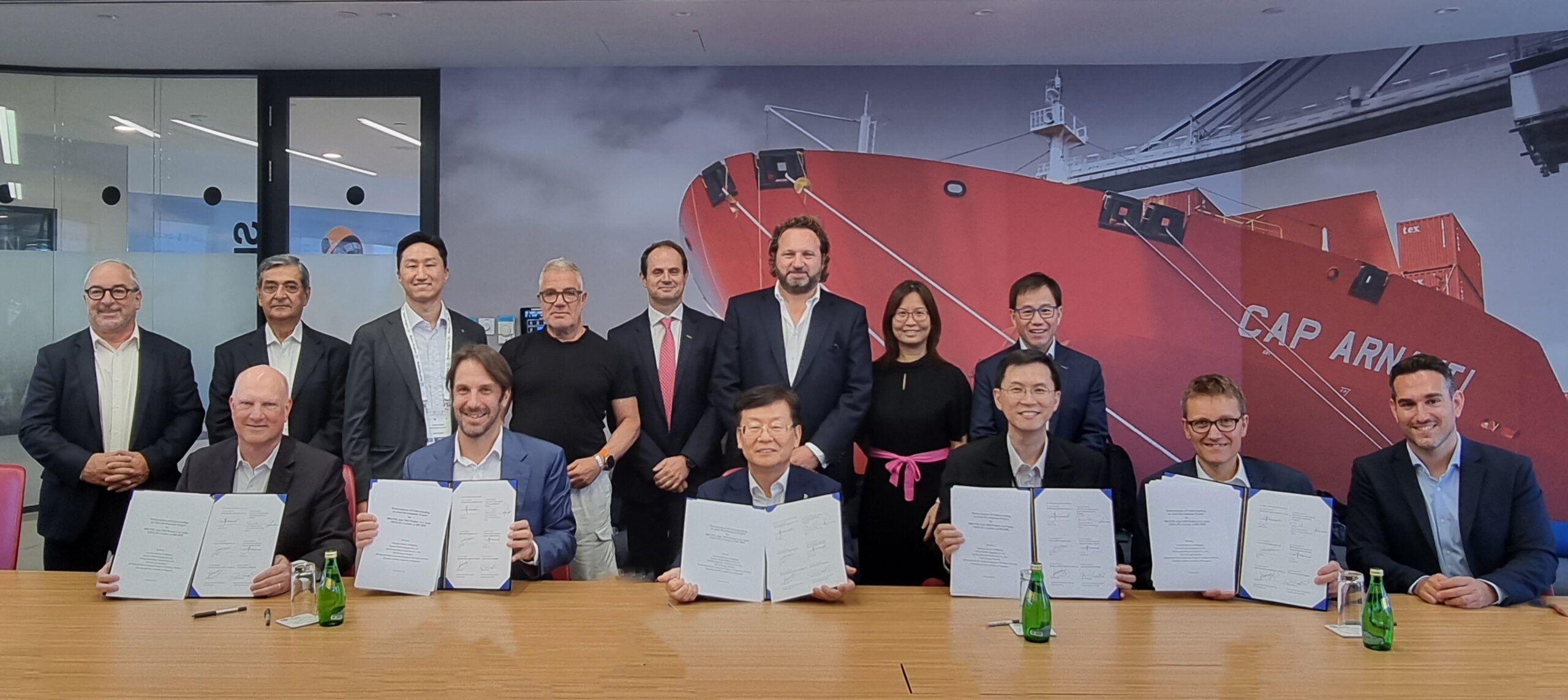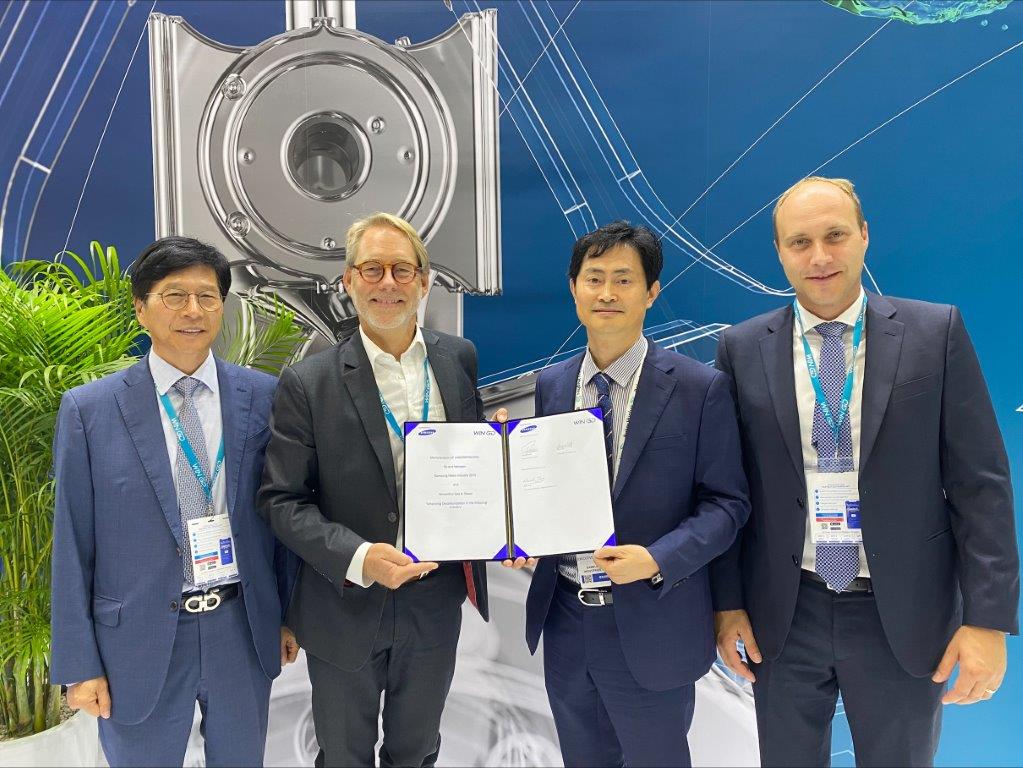Press Release: The transition to low sulphur fuels has so far been smooth, thanks to the efforts of shipping industry stakeholders in preparing for the change, which entered into force on January 1st this year.
However, there are some issues arising over the margin for error in testing the sulphur content and the presence of sediment is causing concern in some areas, warns maritime law specialist Hill Dickinson.
And, as the 1st March deadline for part two of the regulations looms, the legal expert advises ship operators to start planning now to debunker any remaining high sulphur fuel in good time.

Beth Bradley, a London-based Partner at Hill Dickinson, explains: “It is nearly a month from the implementation date of Regulation 14.1.3 of Marpol Annex VI and, while it is too early to draw firm conclusions, a couple of themes are emerging as a result of the change.”
Regulation 14.1.3 Marpol Annex VI, lowers the sulphur content for marine fuel for use on board vessels not fitted with exhaust gas cleaning equipment from 3.5% m/m to 0.50% m/m and took effect of 1 January 2020 (the ‘sulphur cap’). Regulation 14.4.3 Marpol Annex VI limiting sulphur content to 0.10% m/m in Emission Control Areas remains in place.
In the opening weeks of 2020 there have been very few reports of enforcement action taken against vessels for non-compliance with the sulphur cap. Consequently, the transition has been smoother than expected from a port state control perspective. This is in no small amount attributable to the efforts of the key stakeholders (owners, charterers, insurers and bunker suppliers) to prepare to be compliant as of 1 January 2020.
While this suggests a high level of compliance, it is only part of the picture, warns Ms Bradley, explaining that issues relating to the sulphur content of fuel, as well as the quality of some blended low sulphur fuels, are already arising.
Compliance with Regulation 14.1.3 means using a fuel with a sulphur content of 0.50% m/m maximum. If the sulphur content exceeds that threshold, owners may be exposed to enforcement action. Consequently, the frequency of owners having samples tested for sulphur content has increased.
Where the bunkers are found to be marginally in excess of the limit, problems are arising largely owing to the difference between Regulation 14.3.1 and most supply contracts. An on-specification supply for sulphur content will, usually, from a suppliers’ point of view be deemed to be up to 0.53% m/m, since that reflects the laboratory margin of confidence for testing.
“As a result, a time consuming and costly stand-off can occur while the sulphur content issue is resolved and decisions made regarding whether to de-bunker and obtain alternative bunkers,” says Ms Bradley.
In addition, over the past four weeks there have been a number of alerts issued concerning sediment issues, in particular, in low sulphur fuels supplied in Singapore, Piraeus, Amsterdam, Rotterdam, Miami and San Vincente. The propensity to sediment can cause engine problems, from sludging of filters to engine damage and blackouts in the worst circumstances.
Ms Bradley warns: “Quality claims relating to bunkers are not a new phenomenon but, in the past, they have tended to be localised. The spread of alerts concerning sediment, suggests a potentially wider issue concerning the stability of some blended low sulphur fuel.”
She cautions: “Liability, depending on the reasons for sedimentation, may not be straightforward. While charterparties and bunker supply contracts will contain a specification for the fuel, usually by reference to the ISO 8217 standard, some organic compounds which cause sedimentation may not be caught by the Table Two parameters (although the issue may be caught by clause 5.3 of ISO 8217).”
Where shipowners have devolved the responsibility to provide bunkers to the vessel to their time charterers, the time charterers obligation as a matter of English law is two-fold; (a) to provide bunkers in accordance with the contractual specification and (b) to provide bunkers which are fit for purpose.
“As such, if the bunkers are within specification but are causing sedimentation, or are otherwise not fit to be consumed by the vessel, owners may have recourse against their time charterers,” counsels Ms Bradley, adding: “The position is not necessarily the same under bunker supply contracts, particularly if there are clear provisions excluding claims relating to fitness for purpose, which can make it difficult to pursue the supplier.”
Hill Dickinson outlines that, from a practical point of view, the usual advice to owners applies:
• ensure that they have clean bunker tanks
• avoid co-mingling of bunkers, and
• monitor sampling during the supply
Time charterers arranging the supply of bunkers (or owners if dealing direct with the suppliers) need to ensure that they understand the supply contract and have the time bar and sampling provisions firmly in mind in order to preserve their rights of recourse against the supplier, if available.
It also warns that, while the use on board of high sulphur fuel is now impermissible unless the vessel is fitted with exhaust gas cleaning systems, high sulphur fuel may be carried until 1 March.
Ms Bradley predicts: “Looking ahead, enforcement action and quality issues will remain live topics as the shipping industry adjusts to the sulphur cap. The next pinch point will be 1 March 2020 when the carriage ban takes effect.
“Owners have a little over a month in which to arrange to de-bunker high sulphur fuel and would be best advised to start planning those operations (if not already in hand) now, so as to avoid the consequences of missing the deadline,” she advises.

































